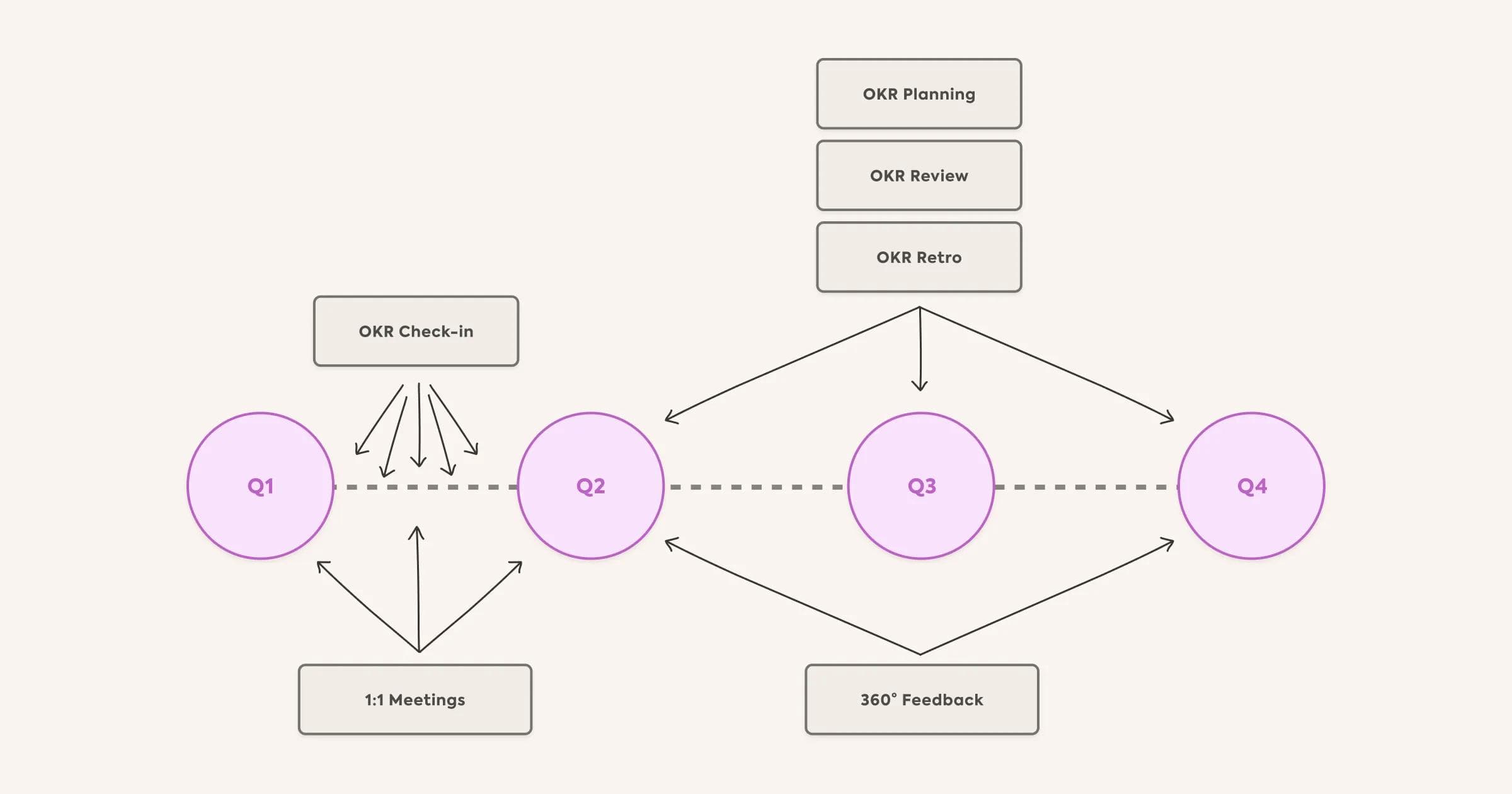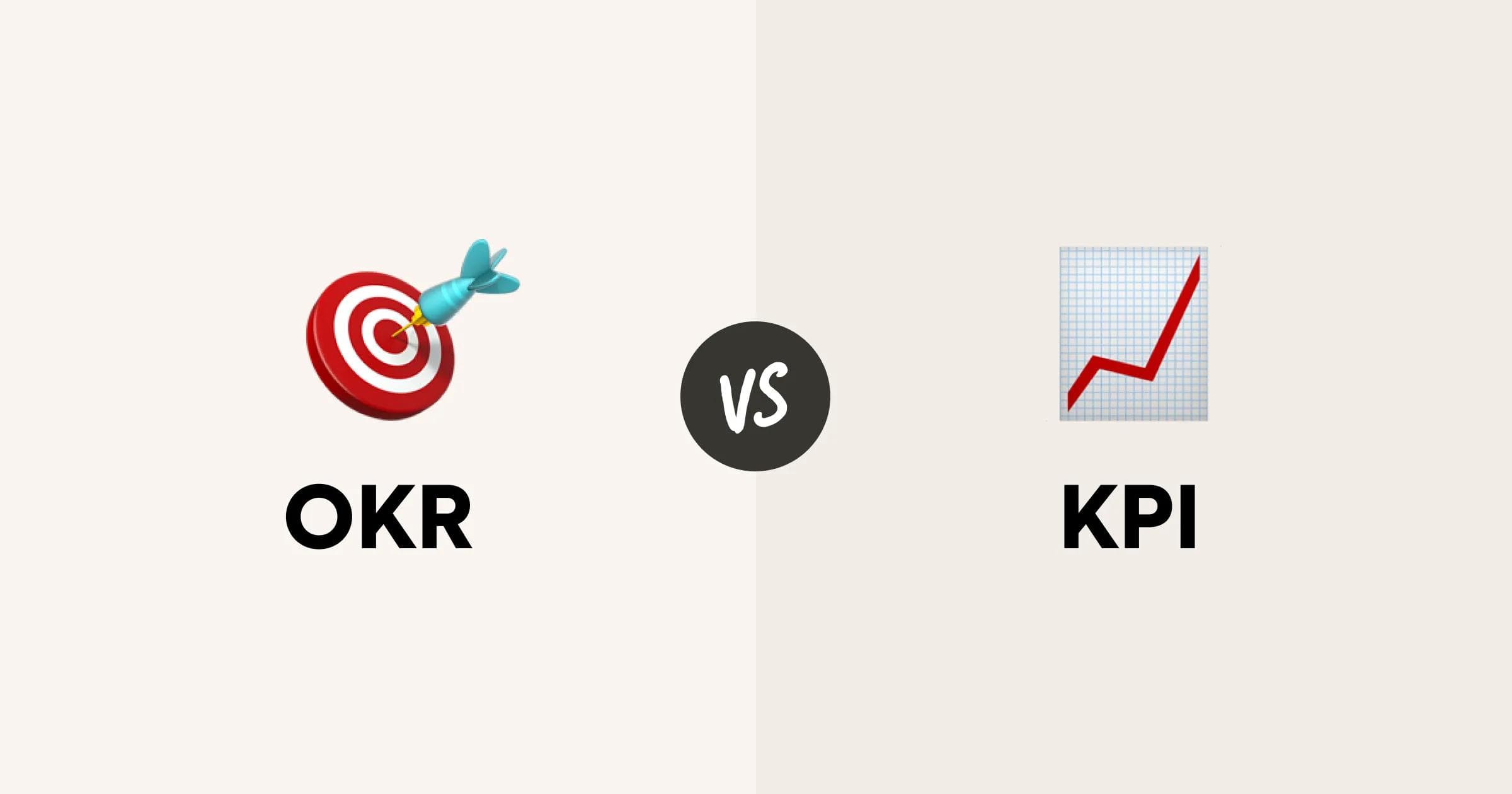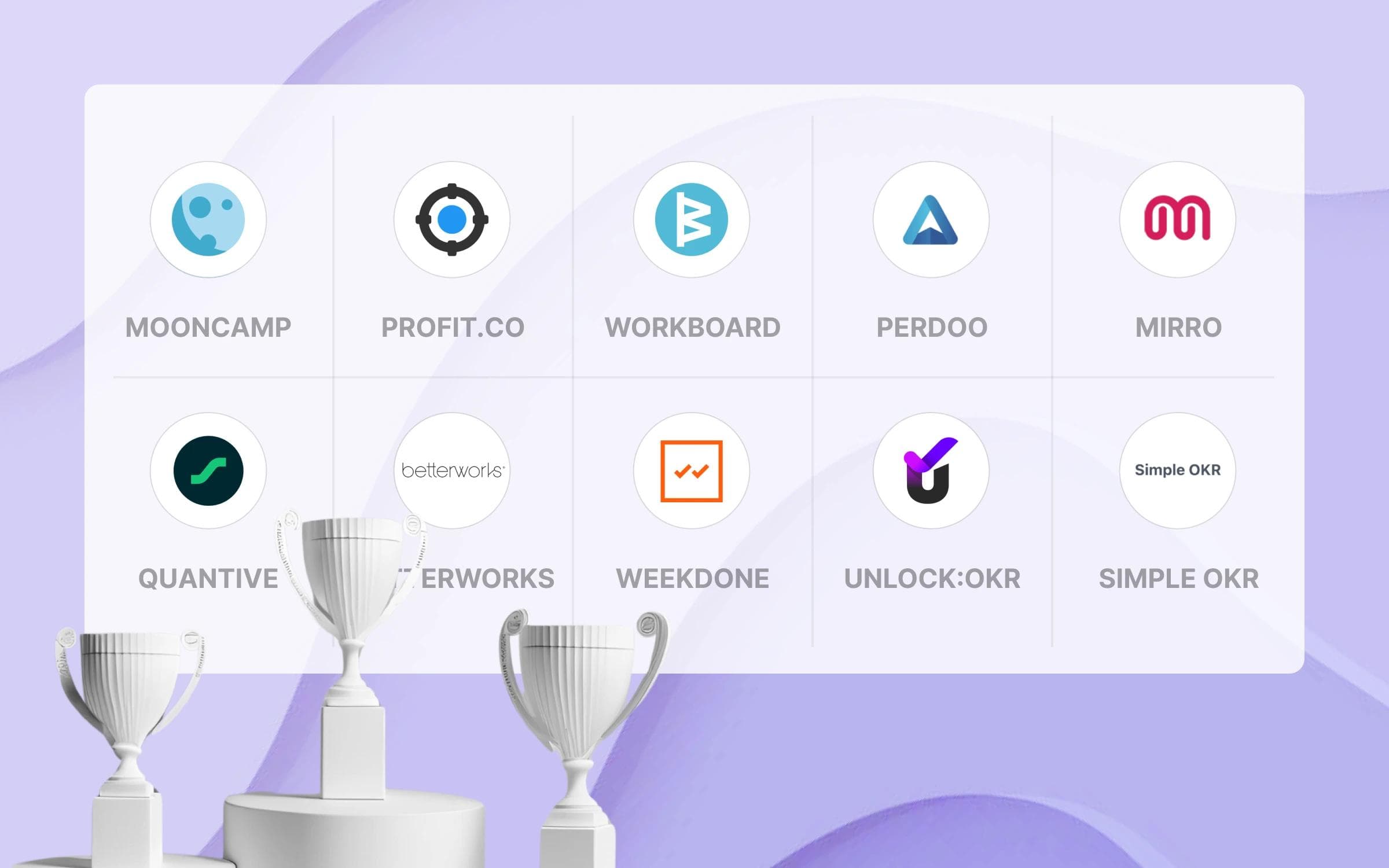While OKR is enjoying increasing popularity as a method for agile goal management, traditional performance management is receiving more and more backlash. At the same time, however, OKR and performance management are often mentioned in the same breath, as both concepts revolve around increasing the organization's performance.
This article aims to provide clarity around the two concepts and answer the questions:
- What are the differences between OKR and performance management?
- What is the difference between OKR and MBO?
- Is OKR a performance management tool?
- What is continuous performance management (CPM) or agile performance management?
- What are the differences between traditional PM and CPM?
- Are OKR and performance management compatible?
What is the difference between OKR and performance management?
What is OKR? OKR stands for "Objectives and Key Results" and is a modern method for goal and people management. One of the key advantages of the method is the linking of qualitative goals (Objectives) with two to four quantitative goals (Key Results) each. In this way, OKRs enable a company to translate its vision and strategy into measurable goals that are more tangible for employees. OKRs are typically set every quarter in order to be able to react quickly to changes.
To learn more about the benefits, process and history of OKRs, check out our OKR Guide. To learn what OKRs can look like in real life, visit our collection of OKR examples.
What is Performance Management? Performance Management (PM) is the process of ensuring that a set of activities and outcomes achieve an organization's goals in an effective and efficient manner. Performance management can focus on the performance of an organization, a department, an employee, or the processes used to accomplish specific tasks.
In practice, the term performance management is used primarily in connection with performance appraisal and management and development of employees. The performance appraisal (also known as performance review or performance evaluation) usually takes place once a year.
How exactly can OKR and performance management be distinguished?
**OKR** | **Performance Appraisal ** | |
|---|---|---|
**Focus** | Organization, departments, teams | Employees |
**Goal** | Increased performance through Transparency Focus Collaboration Self-organization Ambitious goals | Increased performance through Formal feedback Skill development Career paths Incentives (mostly monetary) |
**Cycle** | Usually every 2-4 months | Usually every 12 months |
**Compensation** | Should be explicitly decoupled from compensation, otherwise the benefits of OKRs will be undermined | Performance appraisal is the basis for compensation and promotions |
**Transparency** | OKRs should be openly communicated and publicly viewable for them to be effective | Confidential process between manager or HR and employees |
Why OKRs and compensation should remain separate
We notice that the two concepts differ considerably in terms of their understanding and purpose. Nevertheless, OKR and performance management are often mentioned together because employees are directly linked to specific key results as owners. On the surface, it seems obvious to use the attainment or non-attainment of OKRs as the basis for evaluating the performance of the respective OKR owners.
In fact, however, this is one of the most common mistakes made when implementing OKRs:
Coupling compensation to OKRs undermines the OKR method, since one of the main benefits of OKRs is to set ambitious goals, test out what is possible, stimulate innovation, and experiment. Employees whose bonuses and promotions are directly tied to achieving their OKRs will understandably set their goals so low in the future that they will achieve them no matter what. This behavior to be avoided is also called sandbagging or under-promising.
In reality, however, not achieving goals can have very different reasons, rather than underperformance by the employee in question. Perhaps the OKRs were too unrealistic at the corporate level, the formulation of the OKRs still needed improvement, or new developments occurred within the cycle in the neighboring team, so that it was no longer possible to rely on the support of the team in achieving a shared Key Result. Thus, a whole range of systemic reasons may be responsible for non-attainment.
Another reason for the incompatibility between OKR and PM is largely rooted in an outdated worldview of traditional performance management.
Prior to OKR, the " Management by Objectives" (MBO) goal management framework was widely used. With MBO, goals are set top-down, evaluated annually, and are tied to compensation. This approach thus went hand-in-hand with traditional PM and its annual performance appraisals and employee reviews.
However, the new complexity and unpredictability of the world of work requires a focus on principles such as transparency, self-organization, and continuous improvement, with the goal of responding in real time to customer feedback and evolving requirements. These principles were at odds with the common practice of cascading goals top-down and measuring employees against them once a year.
In response to these new challenges, MBO gave rise to the OKR framework. And the outdated, yet structurally entrenched model of performance management, also began to crumble. Harvard Business Review calls it a performance management revolution and reports how technology giants such as Adobe, Dell, Microsoft, IBM, and even General Electric, former role model for traditional performance management, have turned their backs on the practice and are exploring new paths.
The reasons for this are manifold, but essentially it comes down to three drawbacks of the old performance management:
- Feedback to employees comes far too late: For employees to continuously improve, they need timely and relevant feedback. Keeping feedback under wraps long after an event and saving it for the end-of-year conversation is ineffective and creates unrest for both managers and employees.
- Costly and time-consuming: Preparing for annual performance reviews takes a lot of time - consulting firm Deloitte found that the average executive spends 210 hours on performance reviews. Add to that a new layer of bureaucracy that also takes up a lot of resources.
- Demotivating: Almost all employees loathe the practice of annual performance appraisals because it is associated with a lot of effort and negative emotions. In addition, the pure focus on numerical ratings fosters the feeling of being just a cog in the wheel. Lastly, timely recognition of achievements and praise are often neglected.
We therefore conclude that traditional performance management must give way to a new and more contemporary model of PM.
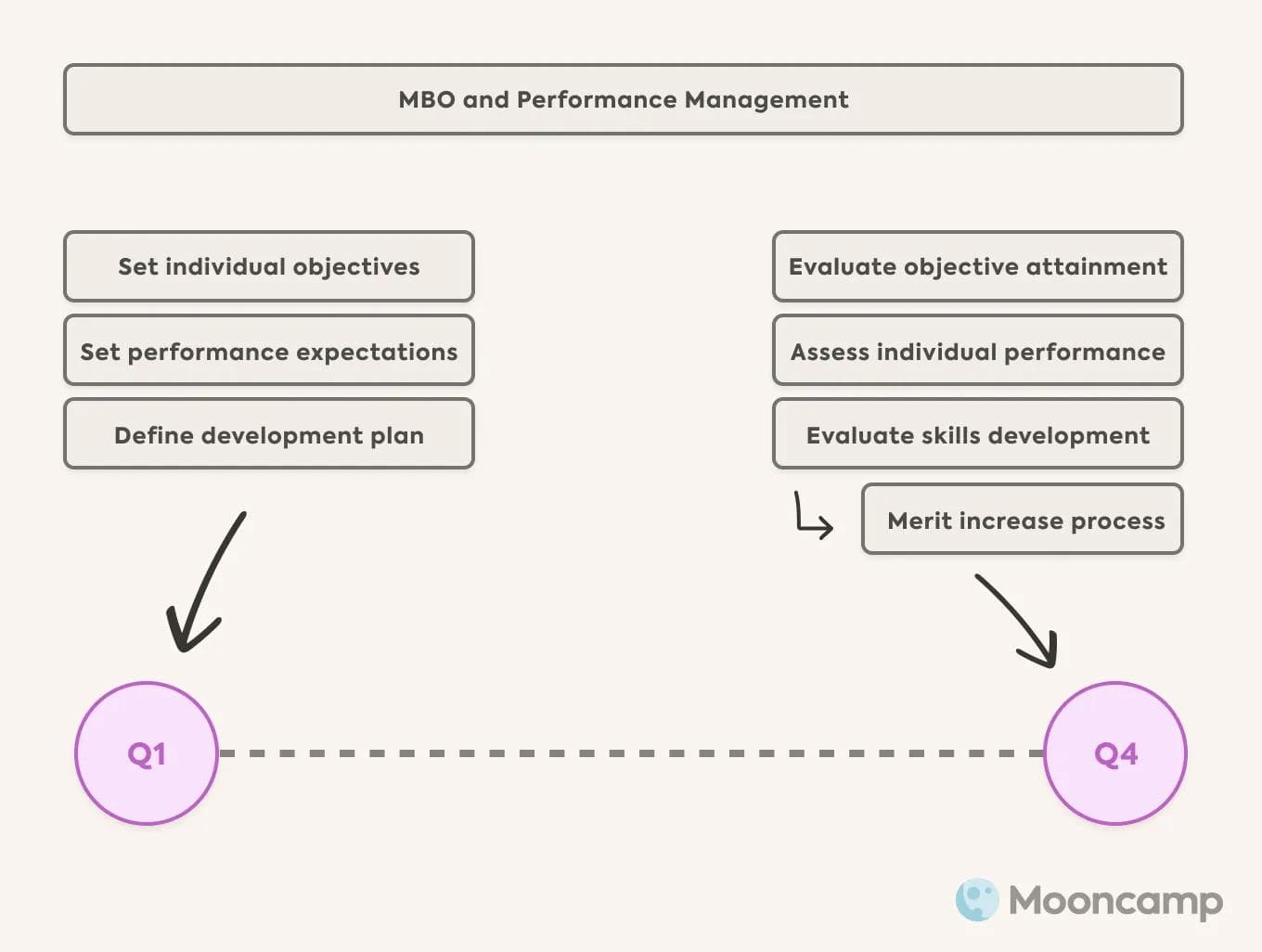
But where is the journey headed? The answer is continuous performance management (CPM) or agile performance management.
What is Continuous Performance Management (or Agile Performance Management)?
Continuous Performance Management (or Agile Performance Management) is a modern, people-centric approach to driving, assessing and improving employee performance. It enables your organization to create a trusting environment where employees feel empowered to take control of their own development.In a culture of continuous performance management, employees support each other with a wide range of real-time feedback - appreciative, instructive, and meaningful.
Continuous Performance Management has several advantages over the old approach:
- Shorter cycles and agility: Annual reviews give way to frequent check-ins with employees to give them feedback exactly when it's most relevant. This in turn allows employees to adjust behaviors and respond to new changes with flexibility and agility.
- Focus on employee development: Employee reviews focus on the development of the employee, rather than sober and demotivating performance evaluations.
- Cost Efficiency: The CPM approach is much leaner than the annual bureaucratic fuss about employee reviews and performance appraisals.
- Teamwork: Instead of pitting employees against each other with rankings, Continuous Performance Management encourages collaboration among them and the creation of high-performing teams.
How does Continuous Performance Management compare to traditional PM (performance appraisal)?
The following table provides an overview of the key differences between the two concepts:
**Performance Appraisal ** | **Continuous Performance Management ** | |
|---|---|---|
**Meaning** | Analysis of an employee’s performance and potential for future development | People-centered approach to continuous employee development |
**Nature** | Rigid | Agile |
**Type of tool** | Operational | Strategic |
**Responsible** | HR / Human Resources | Managers |
**Execution** | Annual | Continuous |
**Focus** | Quantitative Aspects | Qualitative Aspects |
**Corrections** | Retrospective | Prospective |
Why OKR and Continuous Performance Management are the perfect fit
Continuous Performance Management has the following core elements as its foundation:
- Continuous recognition and appreciation
- Regular discussions about goals
- Initiatives for learning and skill development
- Constructive feedback
- Frequent performance check-ins and conversations
It turns out that the elements of Continuous Performance Management are highly compatible with the events of the OKR process.
While OKRs revolve around organizational and team level performance, Continuous Performance Management covers individual employee performance and development goals. Of course, the attainment of Key Results may be included in conversations around performance and development. However, it is crucial to make it unmistakably clear that the goals are not hardwired to compensation and performance evaluations of employees. When Key Results fall significantly short of expectations, it is important to explore the causes from a systemic perspective, rather than blaming this on the individual performance of the employee per default.
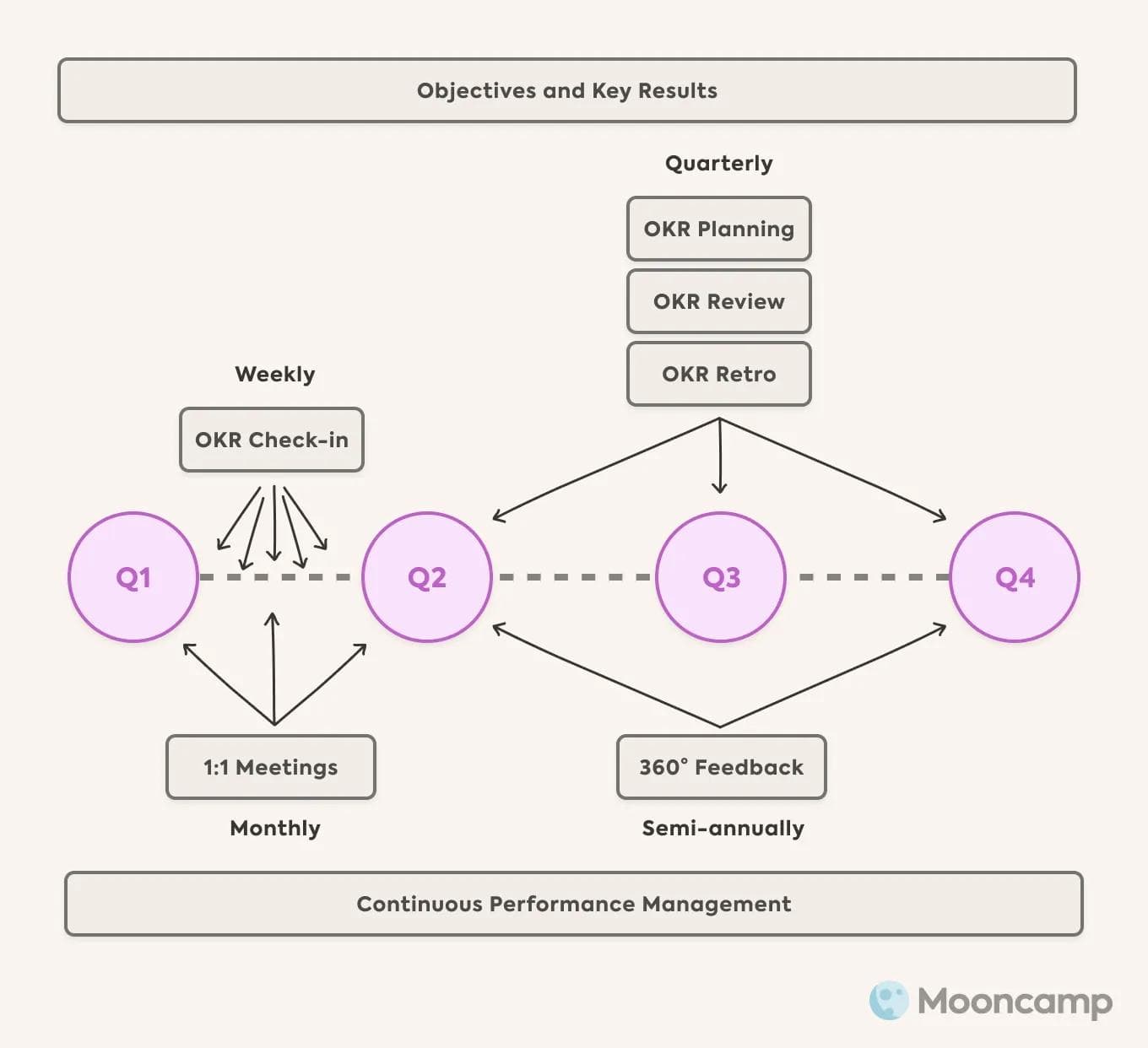
Conclusion
The benefits of OKRs and agile, continuous performance management can be mutually reinforcing when they are integrated with each other in the process.
However, it is always important to keep in mind that OKR and compensation should remain separate, otherwise it will nullify the benefits of OKRs.
Another pitfall is equating OKRs with personal development goals – these concepts should also remain separate.
If OKRs are already in use in your organization, then they are the perfect hotbed to implement a successful Continuous Performance Management process. Conversely, your CPM process can be significantly supported and enhanced by the OKR framework.
In both cases, it's worth looking at a dedicated OKR software that also offers regular team check-ins to embed OKRs in the organization, encourage collaboration among employees, stimulate discussions about goals, and facilitate continuous feedback.
